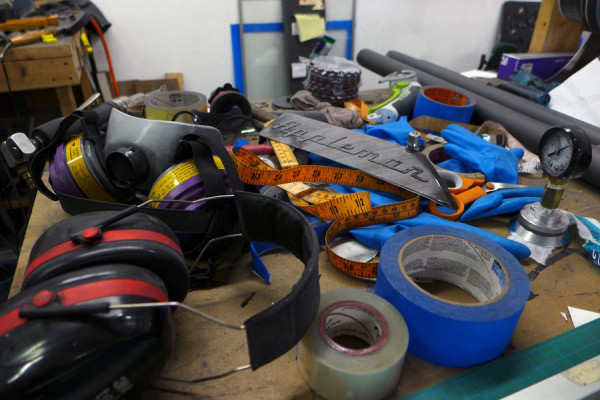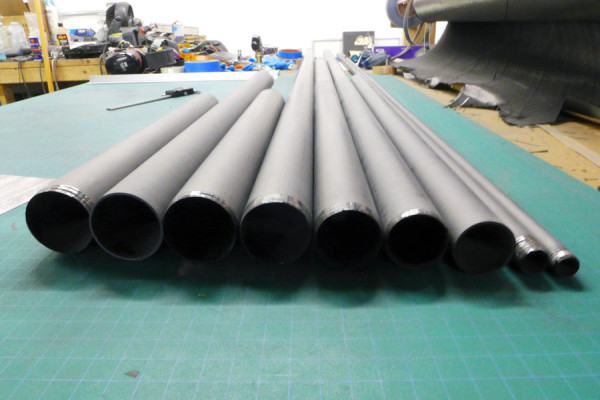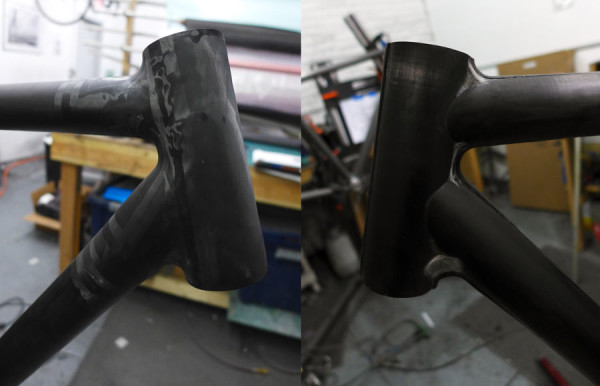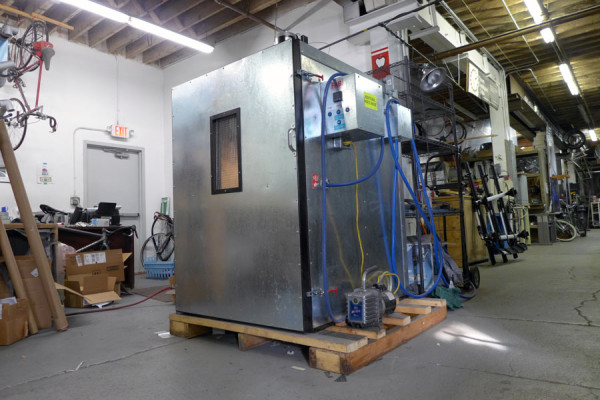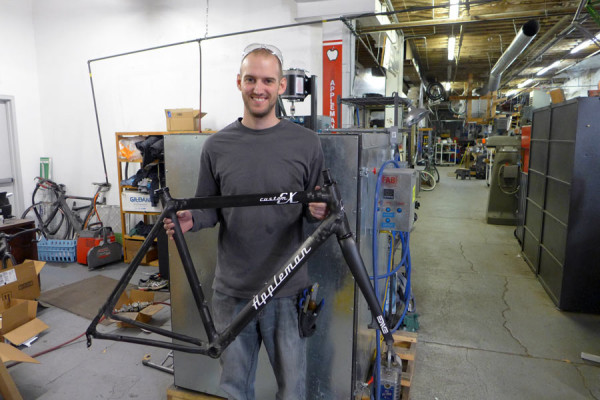Custom frame builder Matt Appleman has a degree in composites engineering. Although the bike industry uses a lot of composite materials, an actual composite engineer is usually a resource only the largest of companies has available. We have seen Matt’s final products at NAHBS 2014, and his attention to detail is obvious.
Matt spent years after college working in California on larger scale wind turbine blades, and on composite raw materials for large corporations. Growing tired of that, he moved back home to Minnesota to start his own bike company.
Building bikes full time for more than four years now, Appleman takes a much more scientific approach than most custom frame builders. We visited and got to take a look at his South Minneapolis shop, find out what makes his frames different after the jump…
Appleman’s frames start life before he even purchases the tubes. Drawing on his experience and connections outside of the bicycle industry, he has a supplier that makes his tubes in the USA. Not one of the typical suppliers to the bike industry, each tube is made to order, and per customer. This means that Appleman looks at each customer, what they want for ride quality, what their strength and weight is, and designs the layup schedule of each individual tube. If this seems over the top, it’s because it is exactly that. Few others go to this level of detail per customer, but this is why Appleman only makes 15 frames per year.
From these tubes, he then follows a relatively standard method of framebuilding, following the drawing and mitering each tube to fit tightly together. He even does this in an Anvil fixture, something most of the steel custom frame builders use. The primary difference is at this point, he is using a light bead of epoxy to glue all the tubes together instead of applying spot welds to tack the tubes into place. Carbon fiber is strongest when it takes smooth curves, so after this, he applies fillets of a light filler at all junctions before the layers of pre-preg are wrapped over the entire joint.
We were not able to photograph the wrapping of the joints, but based on the weight of the rider and the style of the bike, Appleman would apply multiple layers of material in a very specific pattern, commonly referred to as a layup schedule. This is where Appleman is different from most custom carbon fiber builders, since most do not have an engineering degree in this area, they would be guessing at the orientation and placement of these layers. For Matt, its a science and thoroughly planned out ahead of time.
Pre-preg is a common term used to describe carbon fiber raw material that is pre-coated with the exact proper ratio of resin and hardener, one on each side of the material. Kept cool, the two parts of the epoxy will not mix, but when heated, they meld and start the reaction that forms a hardened epoxy. To do this, Appleman uses a custom designed oven that heats to the proper temperature for this reaction, but also has connections for the vacuum bags that keep the layers compressed during this process.
Appleman believes he was the first small custom builder to create a complete frame from carbon fiber with no metal inserts or drop outs. Even though he is very small, he uses his engineering experience to constantly push new ideas to build better frames. The only metal on the frame is the replaceable derailleur hanger. Unless you opt for the thin titanium logo plate, that is. Carbon fiber or wood logo options let you keep it virtually metal free.
Appleman’s frames are $5,000, and there is currently about a 6 month backlog on them. He mostly makes cross and road frames, but does mountain as well.
